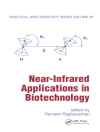Written with the practicing medicinal chemist in mind, this is the first modern handbook to systematically address the topic of bioisosterism.
As such, it provides a ready reference on the principles and methods of bioisosteric replacement as a key tool in preclinical drug development.
The first part provides an overview of bioisosterism, classical bioisosteres and typical molecular interactions that need to be considered,
while the second part describes a number of molecular databases as sources of bioisosteric identification and rationalization. The third part
covers the four key methodologies for bioisostere identification and replacement: physicochemical properties, topology, shape, and overlays of
protein-ligand crystal structures. In the final part, several real-world examples of bioisosterism in drug discovery projects are discussed.
With its detailed descriptions of databases, methods and real-life case studies, this is tailor-made for busy industrial researchers with little time for reading, while remaining easily accessible to novice drug developers due to its systematic structure and introductory section.
Содержание
PREFACE
PART ONE: Principles
BIOISOSTERISM IN MEDICINAL CHEMISTRY
Introduction
Isosterism
Bioisosterism
Bioisosterism in Lead Optimization
Conclusions
CLASSICAL BIOISOSTERES
Introduction
Historical Background
Classical Bioisosteres
Nonclassical Bioisosteres
Summary
CONSEQUENCES OF BIOISOSTERIC REPLACEMENT
Introduction
Bioisosteric Groupings to Improve Permeability
Bioisosteric Groupings to Lower Intrinsic Clearance
Bioisosteric Groupings to Improve Target Potency
Conclusions and Future Perspectives
PART TWO: Data
BIOSTER: A DATABASE OF BIOISOSTERES AND BIOANALOGUES
Introduction
Historical Overview and the Development of BIOSTER
Description of BIOSTER Database
Examples
Applications
Summary
Appendix
MINING THE CAMBRIDGE STRUCTURAL DATABASE FOR BIOISOSTERES
Introduction
The Cambridge Structural Database
The Cambridge Structural Database System
The Relevance of the CSD to Drug Discovery
Assessing Bioisosteres: Conformational Aspects
Assessing Bioisosteres: Nonbonded Interactions
Finding Bioisosteres in the CSD: Scaffold Hopping and Fragment Linking
A Case Study: Bioisosterism of 1H-Tetrazole and Carboxylic Acid Groups
Conclusions
MINING FOR CONTEXT-SENSITIVE BIOISOSTERIC REPLACEMENTS IN LARGE CHEMICAL DATABASES
Introduction
Definitions
Background
Materials and Methods
Results and Discussion
Conclusions
PART THREE: Methods
PHYSICOCHEMICAL PROPERTIES
Introduction
Methods to Identify Bioisosteric Analogues
Descriptors to Characterize Properties of Substituents and Spacers
Classical Methods for Navigation in the Substituent Space
Tools to Identify Bioisosteric Groups Based on Similarity in Their Properties
Conclusions
MOLECULAR TOPOLOGY
Introduction
Controlled Fuzziness
Graph Theory
Data Mining
Topological Pharmacophores
Reduced Graphs
Summary
MOLECULAR SHAPE
Methods
Applications
Future Prospects
PROTEIN STRUCTURE
Introduction
Database of Ligand — Protein Complexes
Generation of Ideas for Bioisosteres
Context-Specific Bioisostere Generation
Using Structure to Understand Common Bioisosteric Replacements
Conclusions
PART FOUR: Applications
THE DRUG GURU PROJECT
Introduction
Implementation of Drug Guru
Bioisosteres
Application of Drug Guru
Quantitative Assessment of Drug Guru Transformations
Related Work
Summary: The Abbott Experience with the Drug Guru Project
BIOISOSTERES OF AN NPY-Y5 ANTAGONIST
Introduction
Background
Potential Bioisostere Approaches
Template Molecule Preparation
Database Molecule Preparation
Alignment and Scoring
Results and Monomer Selection
Synthesis and Screening
Discussion
SAR and Developability Optimization
Summary and Conclusion
PERSPECTIVES FROM MEDICINAL CHEMISTRY
Introduction
Pragmatic Bioisostere Replacement in Medicinal Chemistry: A Software Maker.s Viewpoint
The Role of Quantum Chemistry in Bioisostere Prediction
Learn from »Naturally Drug-Like» Compounds
Bioisosterism at the University of Sheffield
Об авторе
Nathan Brown is the Head of the In Silico Medicinal Chemistry group in the Cancer Research UK Cancer Therapeutics Unit at the Institute of Cancer Research in London (UK). At the ICR, Dr. Brown and his group support the entire drug discovery portfolio together with developing new computational methodologies to enhance the drug design work. Nathan Brown conducted his doctoral research in Sheffield with Professor Peter Willett focusing on evolutionary algorithms and graph theory applied to challenges in chemoinformatics.
After a two-year Marie Curie fellowship in Amsterdam in collaboration with Professor Johann Gasteiger in Erlangen, he joined the Novartis Institutes for Bio Medical Research in Basel for a three year Presidential fellowship in Basel working with Professors Peter Willett and Karl-Heinz Altmann.
His work has led to the pioneering work on mulitobjective design in addition to a variety of discoveries and method development in bioisosteric identification and replacement, scaffold hopping, molecular descriptors and statistical modeling. Nathan continues to pursue his research in all aspects of medicinal chemistry.












